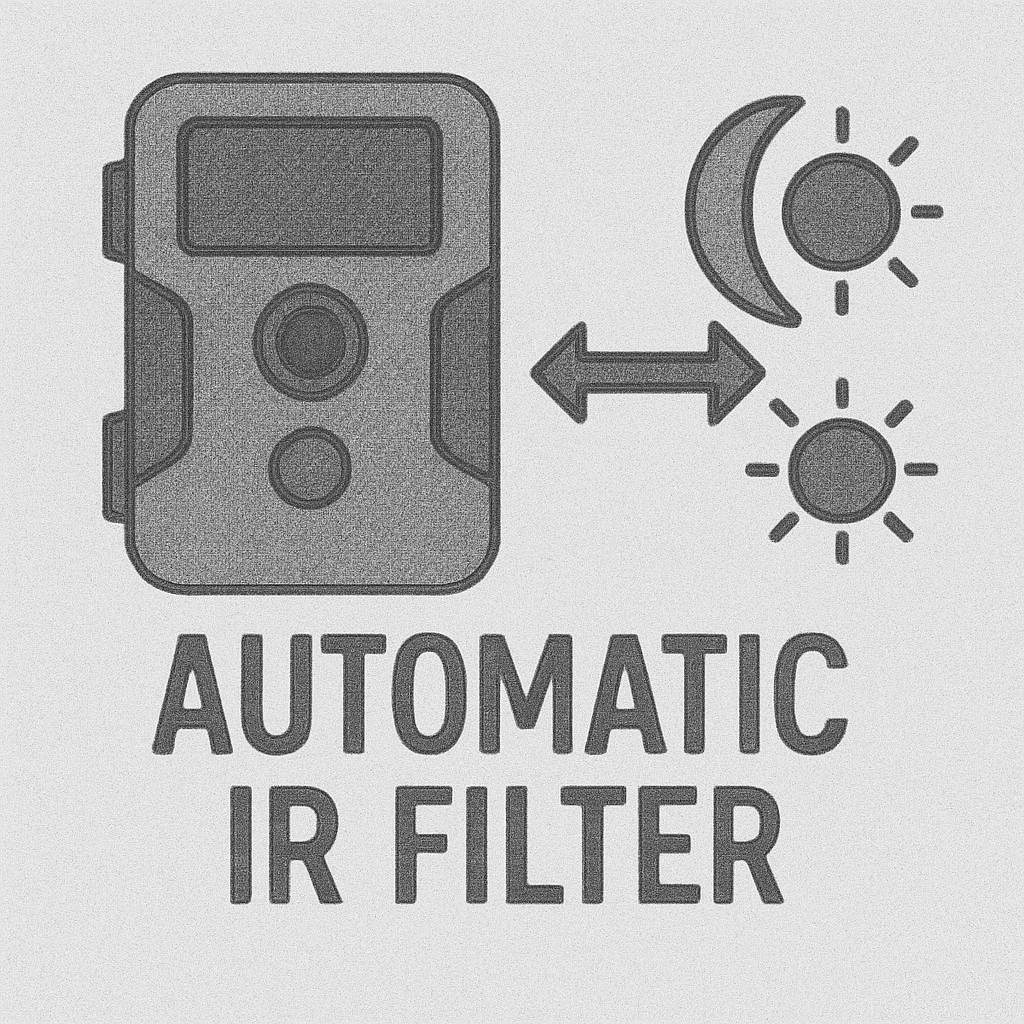IR-Cut Filter
Learn about IR-cut filters, their functionality, advantages, and applications in imaging systems like trail cameras, security cameras, and more.
A mechanism in trail cameras that dynamically adjusts to light conditions for accurate color and effective night vision.

An Automatic IR Filter is a critical component in trail cameras designed to optimize image quality by adjusting to ambient light conditions. It utilizes a mechanical or electromagnetic mechanism to move an IR-blocking filter in front of the camera’s sensor during daylight and retracts it at night. This ensures accurate color reproduction in bright conditions and enhanced night vision in low-light scenarios.
Day Mode:
Night Mode:
| Feature | Details |
|---|---|
| Material | Optical glass or IR-reflective coatings |
| Mechanism | Motorized or electromagnetic actuation |
| Sensor Integration | Lux meters or light-sensitive camera sensors |
| Power Consumption | Minimal to ensure battery efficiency |
The Automatic IR Filter is an indispensable technology for trail cameras, ensuring they perform optimally in diverse lighting conditions. Whether for wildlife enthusiasts, researchers, or security professionals, this feature enhances the functionality and reliability of trail cameras.
For more detailed inquiries or guidance on selecting trail cameras with this feature, feel free to contact us or explore our product range.
Explore our selection of trail cameras equipped with Automatic IR Filters and other cutting-edge technologies.
An Automatic IR Filter is a mechanism in trail cameras that blocks infrared light during the day for true color accuracy and allows IR light at night for enhanced night vision.
It uses a mechanical shutter or electromagnetic system to dynamically move an IR-blocking filter in and out of the camera's sensor path, adapting to ambient light conditions.
It ensures accurate color reproduction during the daytime and enhances night vision capabilities at night, making it ideal for wildlife monitoring and security.
No, the actuation mechanism is designed to be energy-efficient, making it suitable for battery-operated trail cameras.
Automatic IR Filters are typically made of optical glass or coatings that either absorb or reflect IR light, ensuring optimal performance.
Learn about IR-cut filters, their functionality, advantages, and applications in imaging systems like trail cameras, security cameras, and more.

Discover what Daylight Mode in trail cameras is, its technical aspects, practical applications, and tips to optimize performance for wildlife monitoring, hunting, and security.
Discover how infrared (IR) technology is used in trail cameras to capture images and videos at night, its advantages, types, and key use cases.